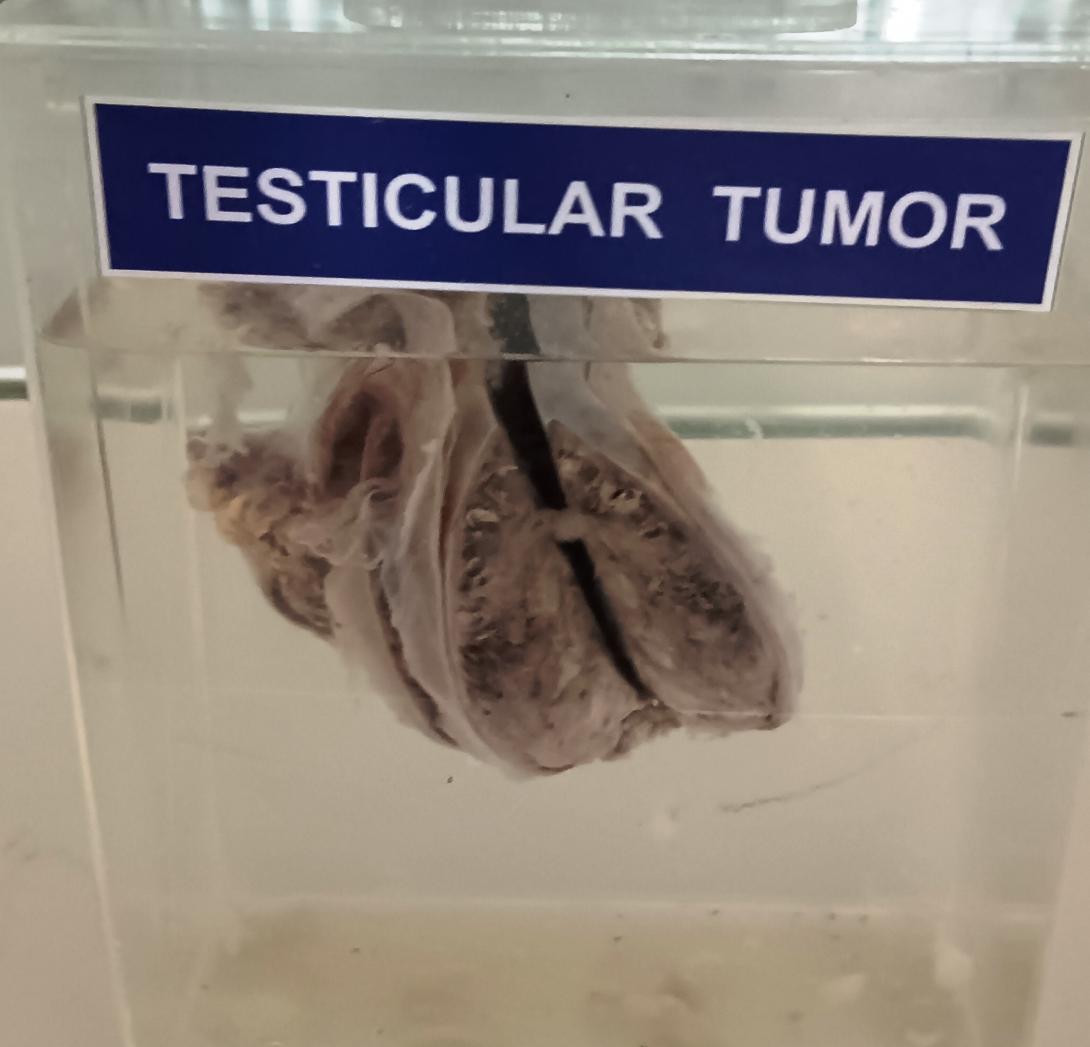Testicular tumors are growths that develop in the testicles, which are the male reproductive organs responsible for producing sperm and testosterone. Here are some pathology points related to testicular tumors:
- Types: There are several types of testicular tumors, including germ cell tumors, which are the most common, as well as Leydig cell tumors and Sertoli cell tumors.
- Risk factors: Risk factors for testicular tumors include a family history of the disease, a personal history of testicular cancer, and certain genetic conditions, such as Klinefelter syndrome.
- Symptoms: Symptoms of testicular tumors may include a painless lump or swelling in the testicle, pain or discomfort in the scrotum, a feeling of heaviness in the scrotum, and enlargement of the breast tissue.
- Diagnosis: Testicular tumors are usually diagnosed through a combination of physical examination, imaging tests such as ultrasound or CT scan, and blood tests to check for tumor markers such as alpha-fetoprotein (AFP) and human chorionic gonadotropin (HCG).
- Treatment: Treatment options for testicular tumors may include surgery to remove the affected testicle (orchiectomy), radiation therapy, chemotherapy, or a combination of these approaches. The choice of treatment will depend on the type and stage of the tumor, as well as the patient's overall health and preferences.
- Prognosis: The prognosis for testicular tumors is generally good, with a high cure rate, especially if the cancer is diagnosed early and treated promptly. However, certain types of tumors may be more aggressive and have a poorer prognosis. Regular follow-up care and monitoring are important for detecting any recurrence or new tumors
Rack Number
Specimen Number
44

